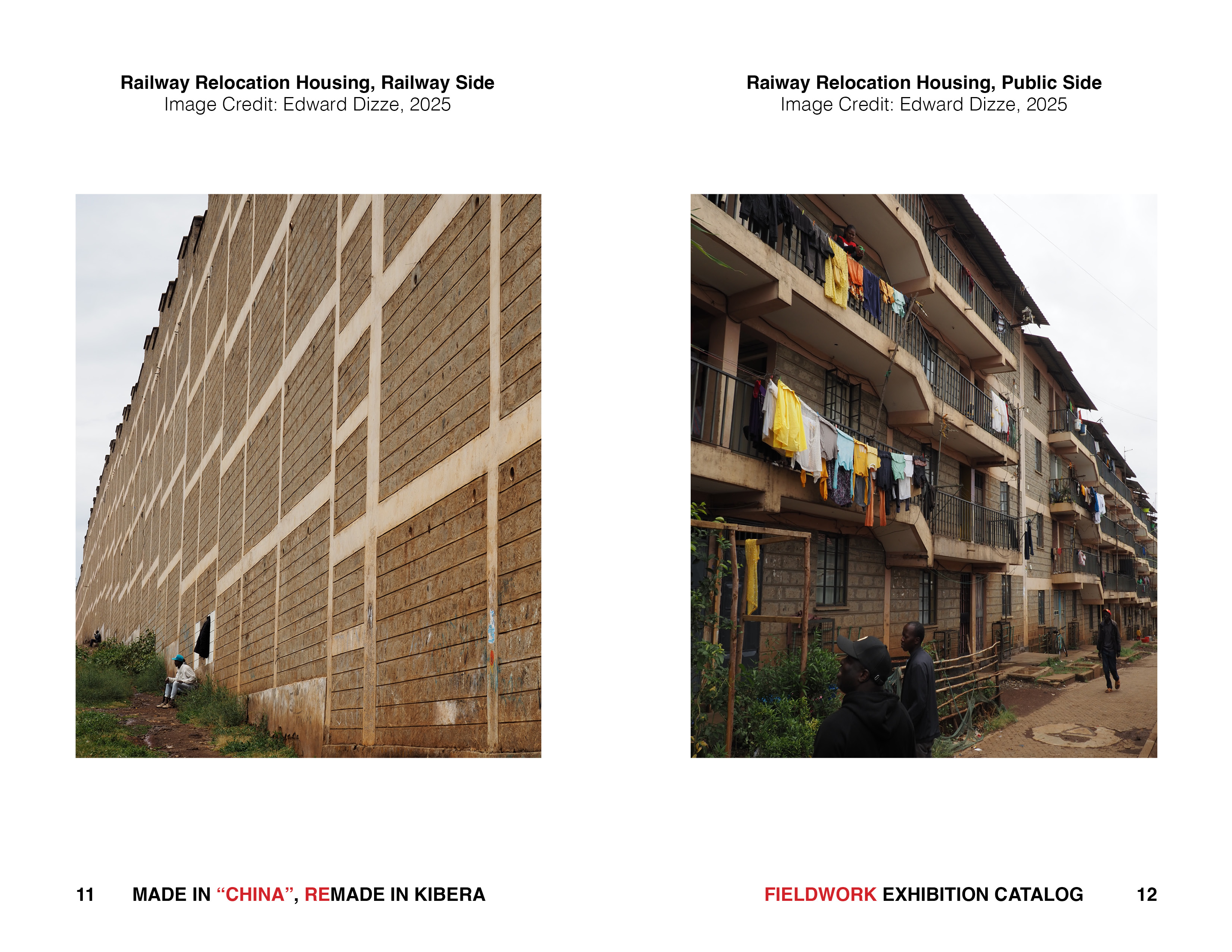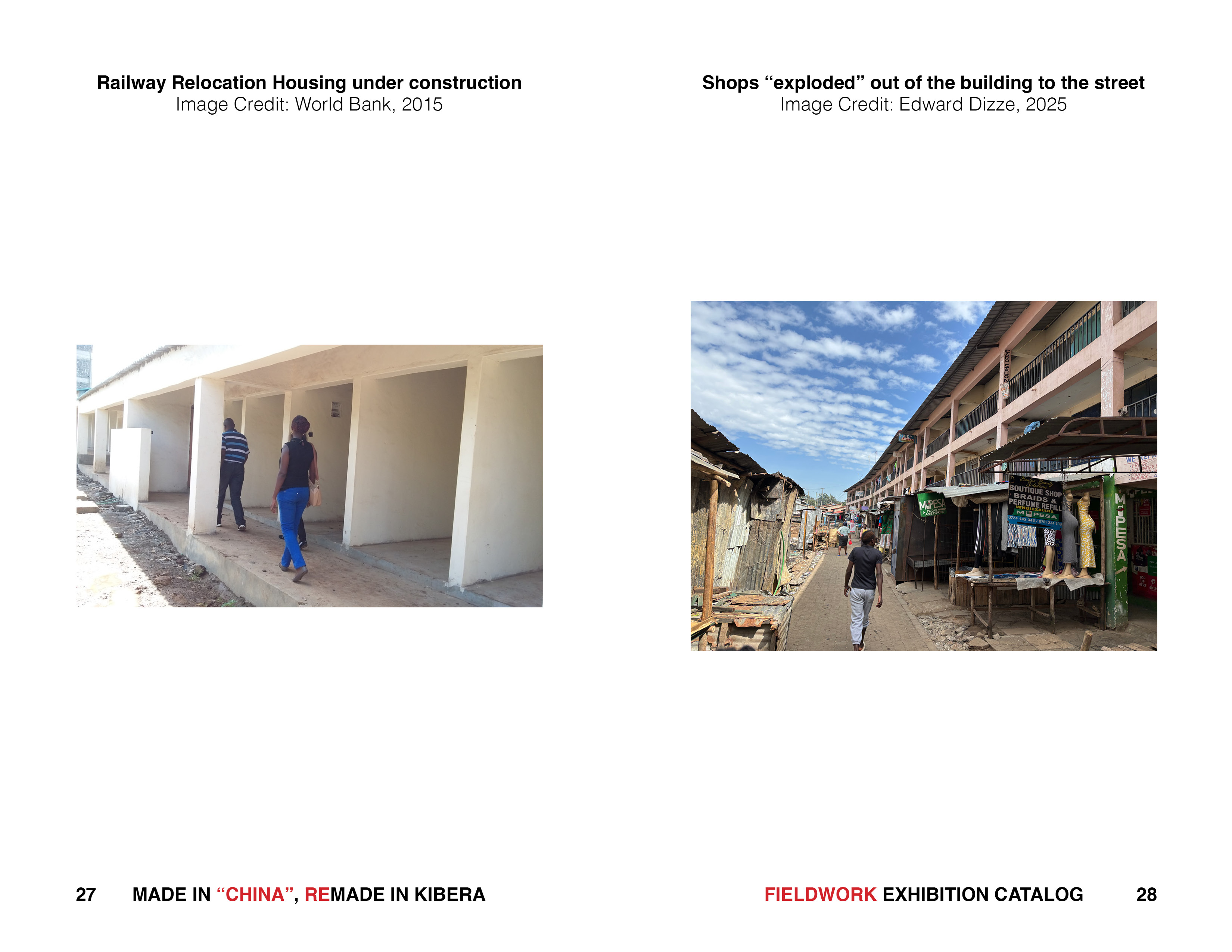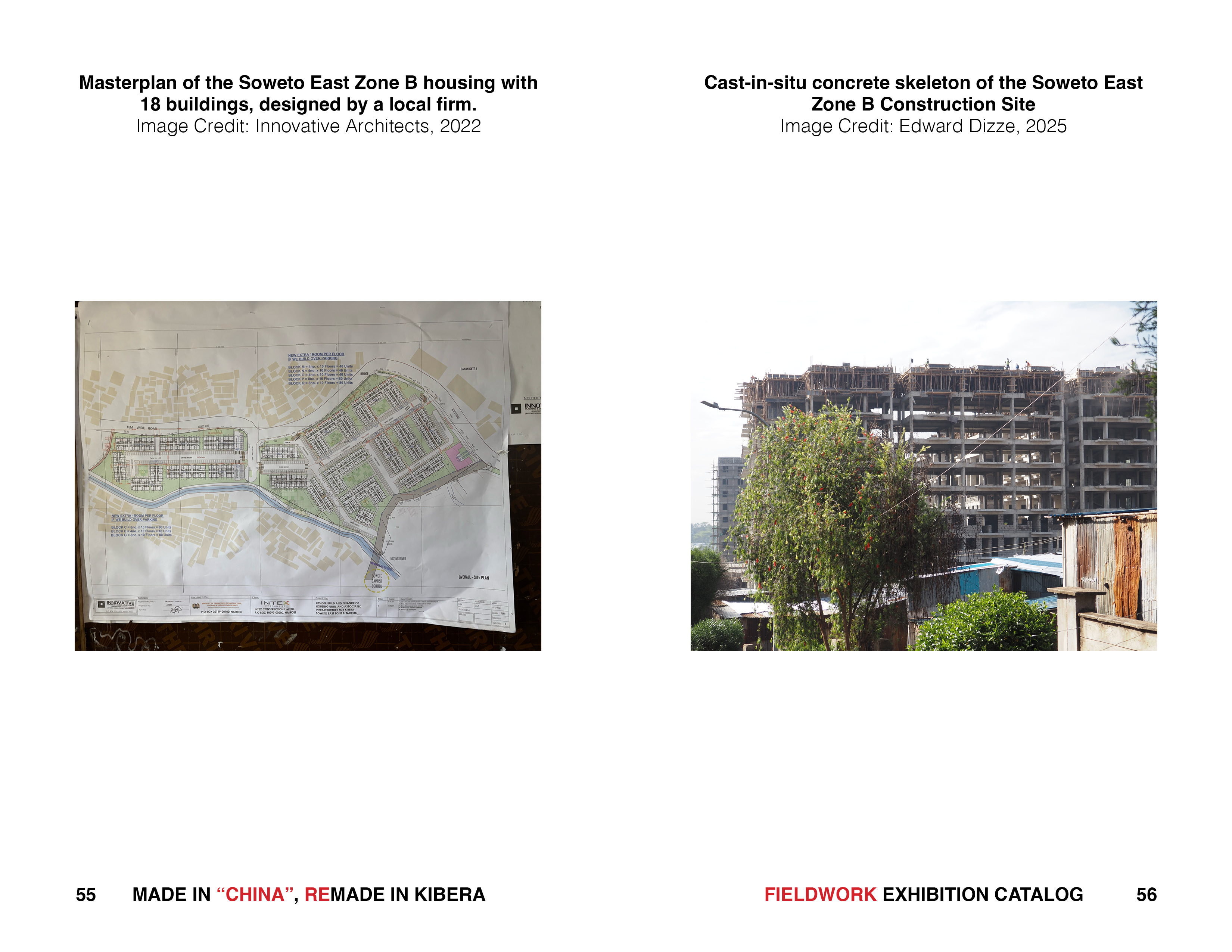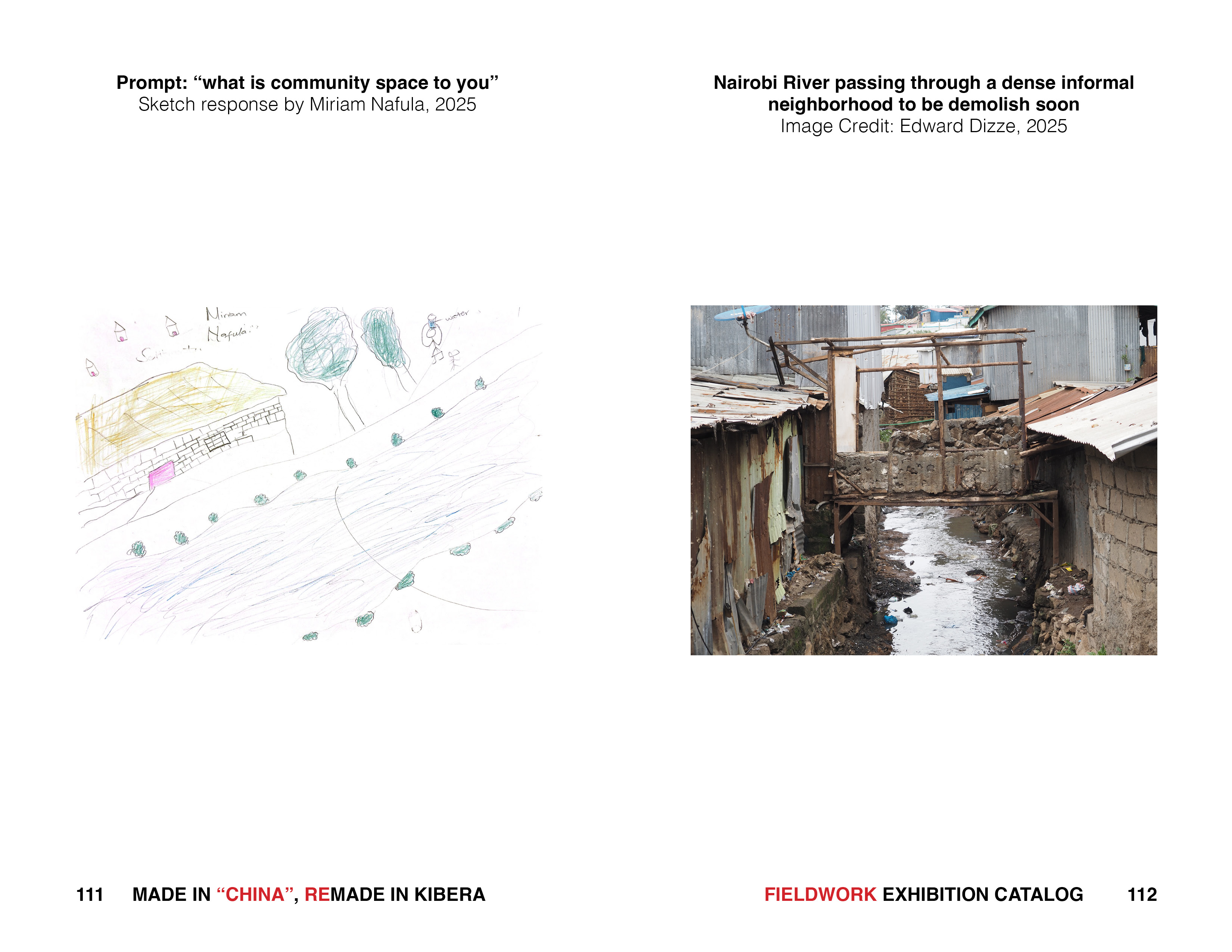MADE IN CHINA, REMADE IN KIBERA
Crown Thesis Award
Britton Memorial Award - Citation of Excellence
April, 2025
PDF Download
In an era of rapid planetary urbanization and geopolitical realignment, what is China’s role in the entangled ecologies of transnational development? Made in “China”, Remade in Kibera delves into the transnational frictions between these global forces and local agencies within Kibera, Nairobi—East Africa’s largest informal settlement. One million people are packed into this neighborhood with an area similar to the SU campus.
Through two intensive field surveys, totaling forty days, I engaged in critical conversations with a diverse spectrum of actors. The final product, an exhibition borrowing from the local practices of air-drying laundry in affordable housing courtyards, emerges by gathering community sketches and handing the camera to local photographers and youths. As a spatial intervention in the atrium itself, this exhibition invites the viewers to immerse in and interact with the cloud of images by viewing the two sides of a panel, which often showcases contrasting narratives of the same subject.
This exhibition draws upon local narratives to reveal that more successful projects allow residents to actively retain their established living practices. Over time, the intended forms of these affordable housing units, as conceptualized by the developers, are frequently subverted and organically “informalized” anew. Ultimately, this research seeks to amplify the voices of Kibera’s residents to inform future building practices. It documents how the residents actively reclaim and reconfigure these contested territories, asserting their own forms of ownership at the emergent frontiers of globalization.
Crown Thesis Award
Britton Memorial Award - Citation of Excellence
April, 2025
PDF Download
In an era of rapid planetary urbanization and geopolitical realignment, what is China’s role in the entangled ecologies of transnational development? Made in “China”, Remade in Kibera delves into the transnational frictions between these global forces and local agencies within Kibera, Nairobi—East Africa’s largest informal settlement. One million people are packed into this neighborhood with an area similar to the SU campus.
Through two intensive field surveys, totaling forty days, I engaged in critical conversations with a diverse spectrum of actors. The final product, an exhibition borrowing from the local practices of air-drying laundry in affordable housing courtyards, emerges by gathering community sketches and handing the camera to local photographers and youths. As a spatial intervention in the atrium itself, this exhibition invites the viewers to immerse in and interact with the cloud of images by viewing the two sides of a panel, which often showcases contrasting narratives of the same subject.
This exhibition draws upon local narratives to reveal that more successful projects allow residents to actively retain their established living practices. Over time, the intended forms of these affordable housing units, as conceptualized by the developers, are frequently subverted and organically “informalized” anew. Ultimately, this research seeks to amplify the voices of Kibera’s residents to inform future building practices. It documents how the residents actively reclaim and reconfigure these contested territories, asserting their own forms of ownership at the emergent frontiers of globalization.

































































